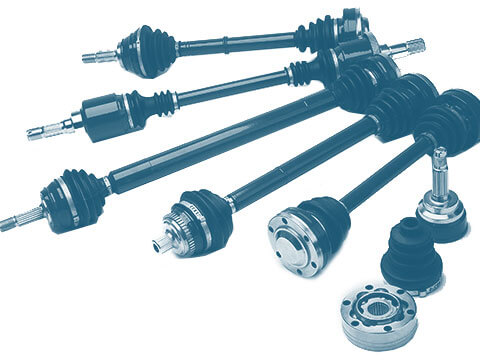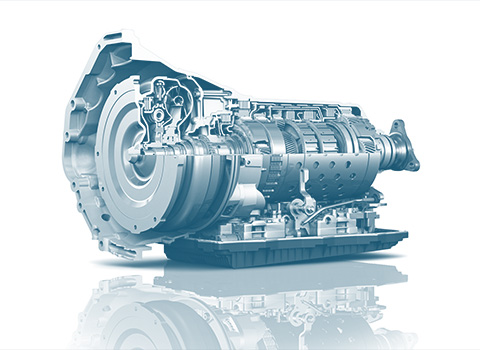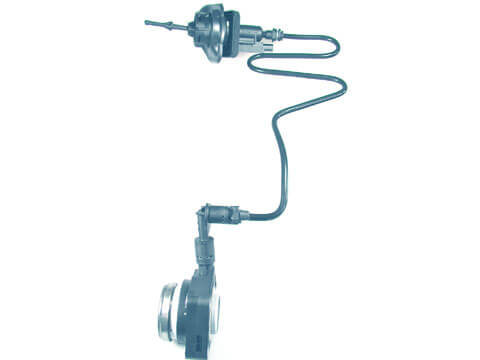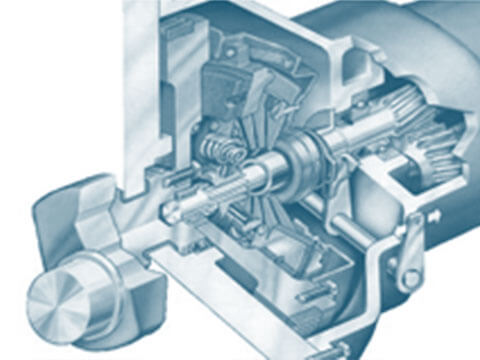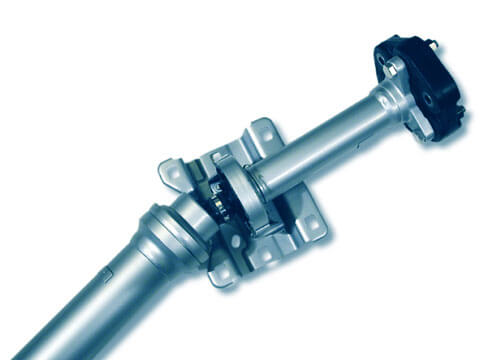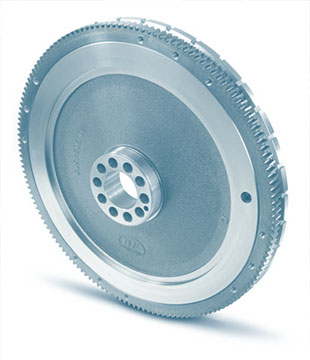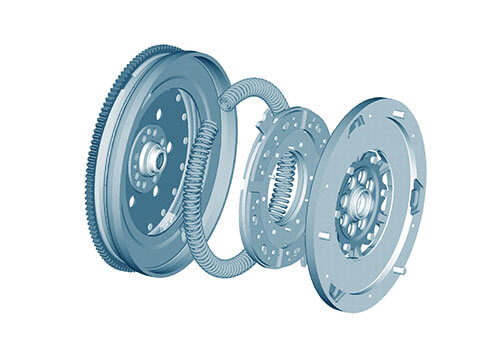Differential
The differential, to be more precise the “differential gear”, is tasked with compensating for the differences in wheel speed on driven axles when cornering.
Function
Function
When driving round a bend, the wheels on an axle have to travel different lengths: the inner wheel travels a shorter path than the outer wheel. This means that the wheels turn at different speeds. The differential gear, also known as the differential, balances out this difference in speed and distributes the torque evenly on both drive wheels.
 When there are road conditions which create differences in traction between the wheel travelling on the inside of the bend and the wheel on the outside, the wheel with the smaller coefficient of friction determines the transferable drive force for both wheels on a driven axle. This means that a wheel with lower friction – for example on loose ground or on ice – spins even at a low torque, and ensures that this low torque is also assigned to the other wheel. A so-called limited-slip differential provides help here.
When there are road conditions which create differences in traction between the wheel travelling on the inside of the bend and the wheel on the outside, the wheel with the smaller coefficient of friction determines the transferable drive force for both wheels on a driven axle. This means that a wheel with lower friction – for example on loose ground or on ice – spins even at a low torque, and ensures that this low torque is also assigned to the other wheel. A so-called limited-slip differential provides help here.
Driving straight ahead
The differential pinion gears, which are mounted in the differential case so they can rotate, take both drive shaft pinions with them in their revolution and distribute the torque evenly on both drive wheels. This means that the differential pinion gears do not rotate about their own axis when driving straight ahead.
Cornering
When cornering, the wheel on the inside of the bend turns more slowly than that on the outside of the bend. Due to the fact that the drive shaft of the wheel on the inside of the bend rotates more slowly, the differential pinion gears roll on the drive pinion gears. The amount that the drive pinion gear on the outside of the bend rotates faster is the same as the amount that the drive pinion gear on the inside of the bend rotates more slowly. When cornering, the differential pinion gears therefore balance out the difference in speed.
Safety
Doing without the differential gear would above all lead to considerable stresses and tyre slip in tight corners. Steering would also be considerably impeded.
Value retention
Differential gears ensure lower tyre wear and a lower load on the drive shafts when cornering.
Protection of the environment
New types of differential gears save up to 70 percent in weight due to a new architecture, resulting in fuel savings. Lightweight differentials are a key element in innovative electromobility solutions, such as compact eAxles for hybrid vehicles.




